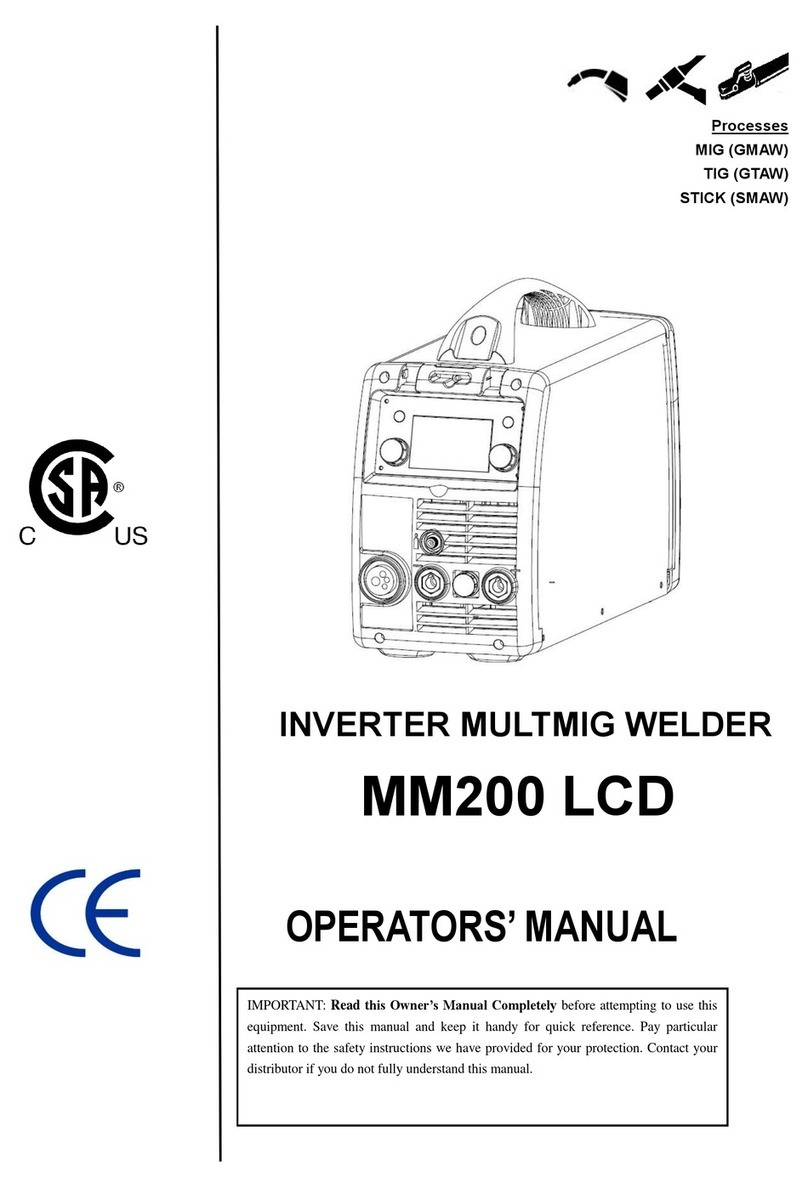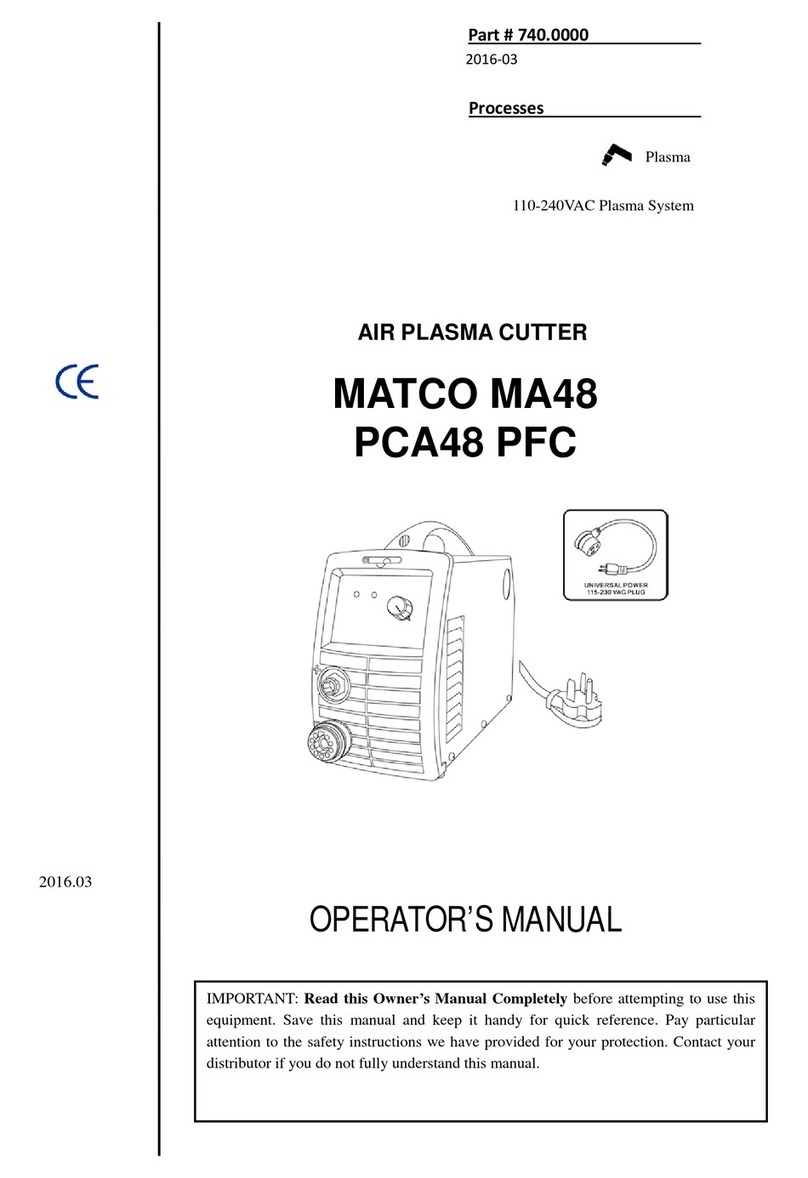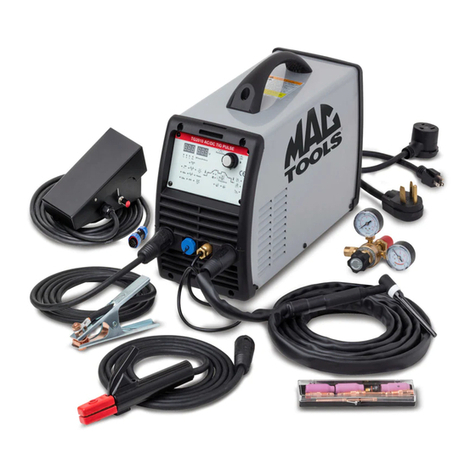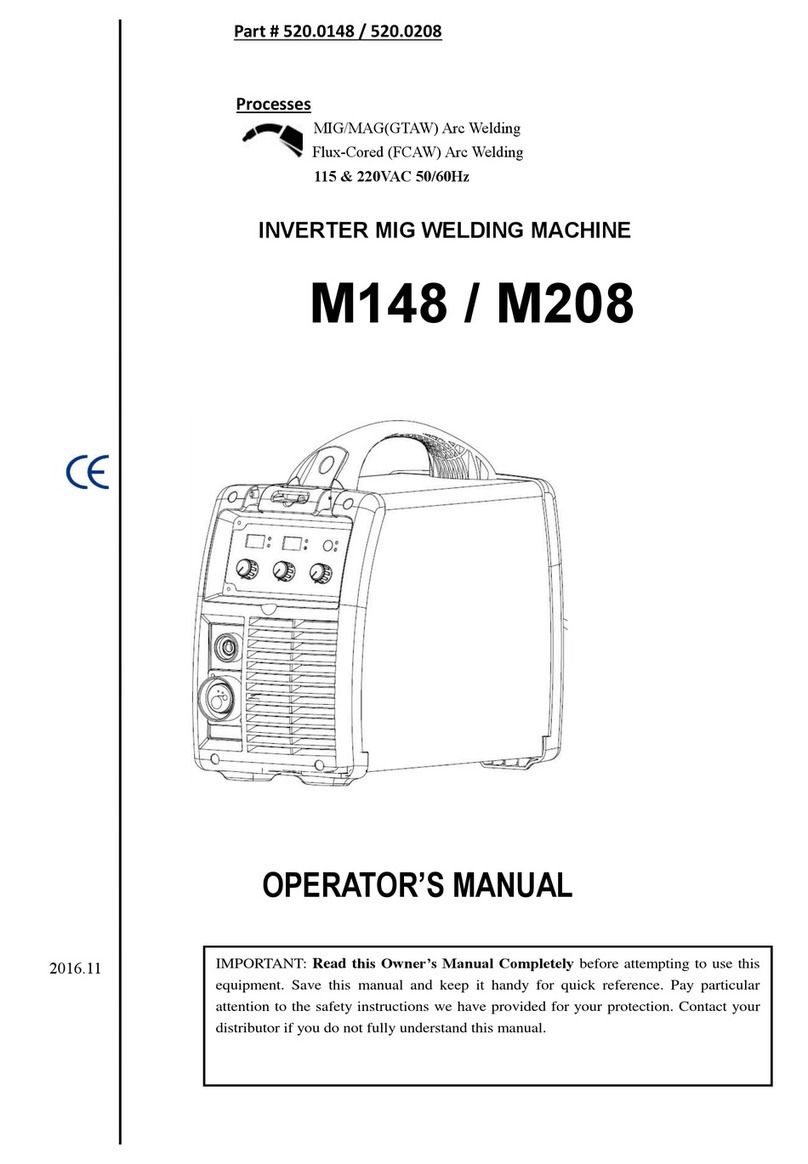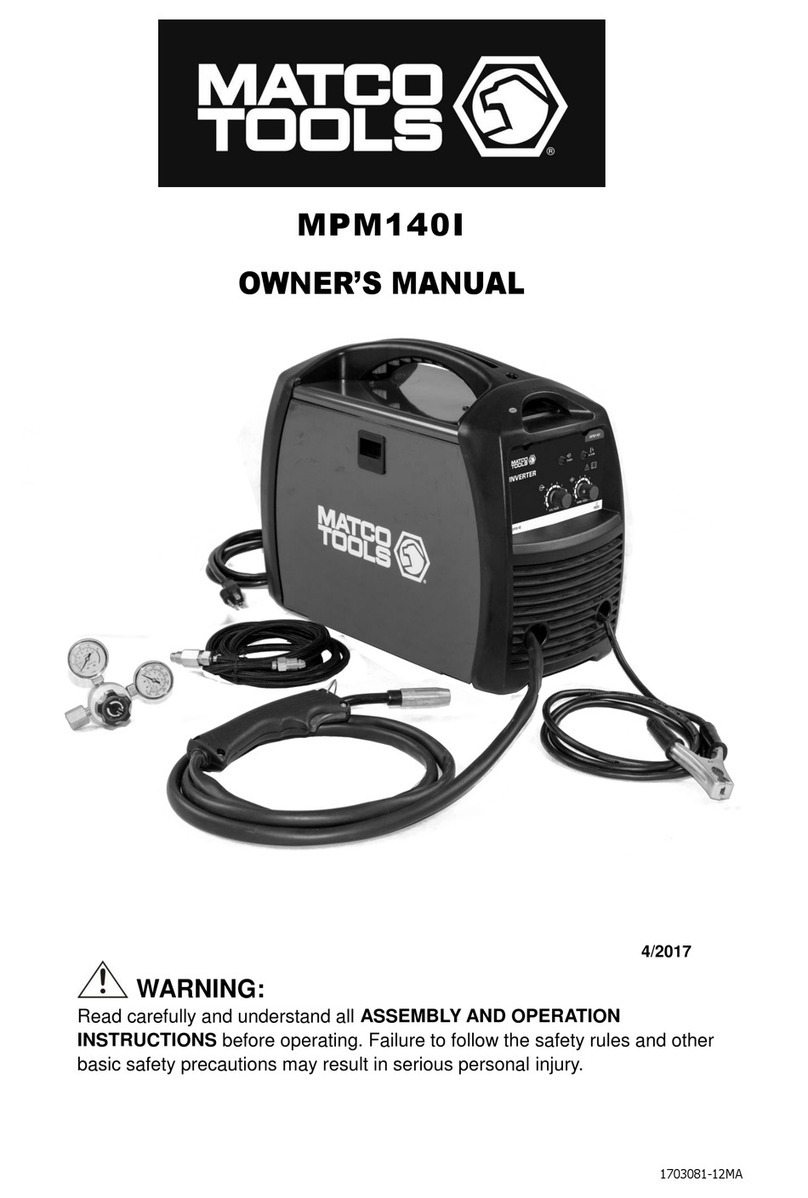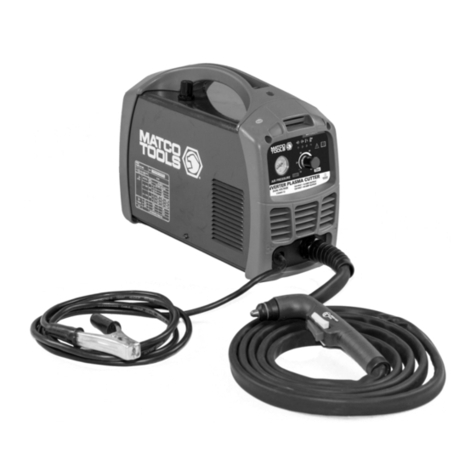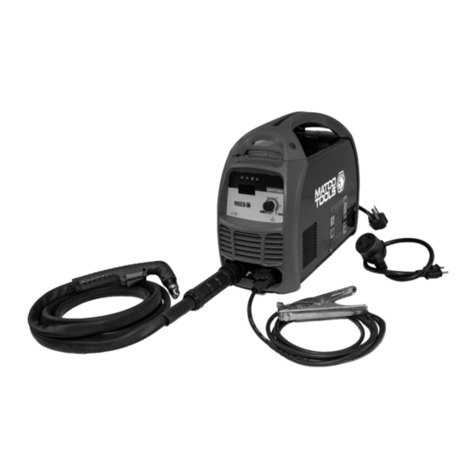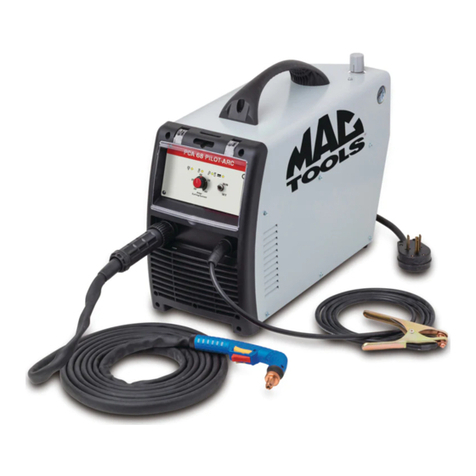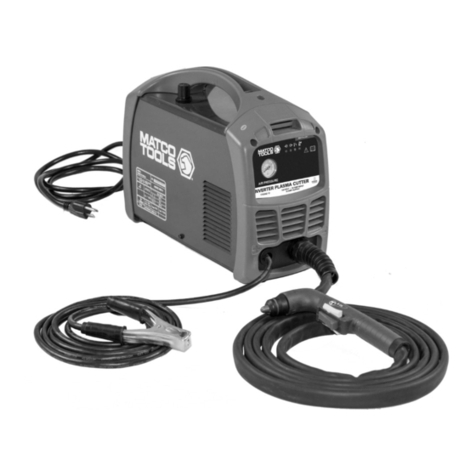Page 4 of 20 1910308-12
Warning
Electrical Shock
Electric arc welders can produce a
shock that can cause injury or death.
Touching electrically live parts can cause fatal
shocks and severe burns. While welding, all
metal components connected to the wire are
electrically live. Poor ground connections are a
hazard, so secure the ground lead before
welding.
-Wear dry protective apparel: coat, shirt, gloves
and insulated footwear.
-Insulate yourself from the work piece. Avoid
contacting the work piece or ground.
- Do not attempt to repair or maintain the welder
while the power is on.
-Inspect all cables and cords for any exposed
wire and replace immediately if found.
-Use only recommended replacement cables
and cords.
-Always attach ground clamp to the work piece
or worktable as close to the weld area as
possible.
-Do not touch the welding wire and the ground
or grounded work piece at the same time.
-Do not use a welder to thaw frozen pipes.
Fumes and Gases
-Fumes emitted from the welding
process displace clean air and can
result in injury or death.
-Do not breathe in fumes emitted by the welding
process. Make sure your breathing air is clean
and safe.
-Work only in a well-ventilated area or use a
ventilation device to remove welding fumes from
the environment where you will be working.
-Do not weld on coated materials (galvanized,
cadmium plated or containing zinc, mercury or
barium). They will emit harmful fumes that are
dangerous to breathe. If necessary, use a
ventilator/respirator with air supply or remove
the coating from the material in the weld area.
-The fumes emitted from some metals when
heated are extremely toxic. Refer to the material
safety data sheet for the manufacturer’s
instructions.
-Do not weld near materials that will emit toxic
fumes when heated. Vapors from cleaners,
sprays and degreasers can be highly toxic when
heated.
UV and IR Arc Rays
The welding arc produces ultraviolet
(UV) and infrared (IR) rays that can
cause injury to your eyes and skin. Do not look
at the welding arc without proper eye protection.
-Always use a helmet that covers your full face
from the neck to top of head and to the back of
each ear.
-Use a lens that meets ANSI standards and
safety glasses. For welders under 160 amps
output, use a shade 10 lens; for above 160 amps,
use a shade 12. Refer to the ANSI standard
Z87.1 for more information.
-Cover all bare skin areas exposed to the arc
with protective clothing and shoes. Flame-
retardant cloth or leather shirts, coats, pants or
coveralls are available for protection.
-Use screens or other barriers to protect other
people from the arc rays emitted from your
welding.
-Warn people in your welding area when you are
going to strike an arc so they can
protect themselves.
Fire Hazards
Do not weld on containers or pipes
that contain or have had flammable,
gaseous or liquid combustibles in them. Welding
creates sparks and heat that can ignite
flammable and explosive materials.
-Do not operate an electric arc welder in areas
where flammable or explosive materials are
present.
-Remove all flammable materials within 35 feet
of the welding arc. If removal is not possible,
tightly cover them with fireproof covers.
-Take precautions to ensure that flying sparks do
not cause fires or explosions in hidden areas,
cracks or areas you cannot see.

